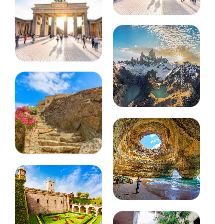
20 must-do things to do in Finistère
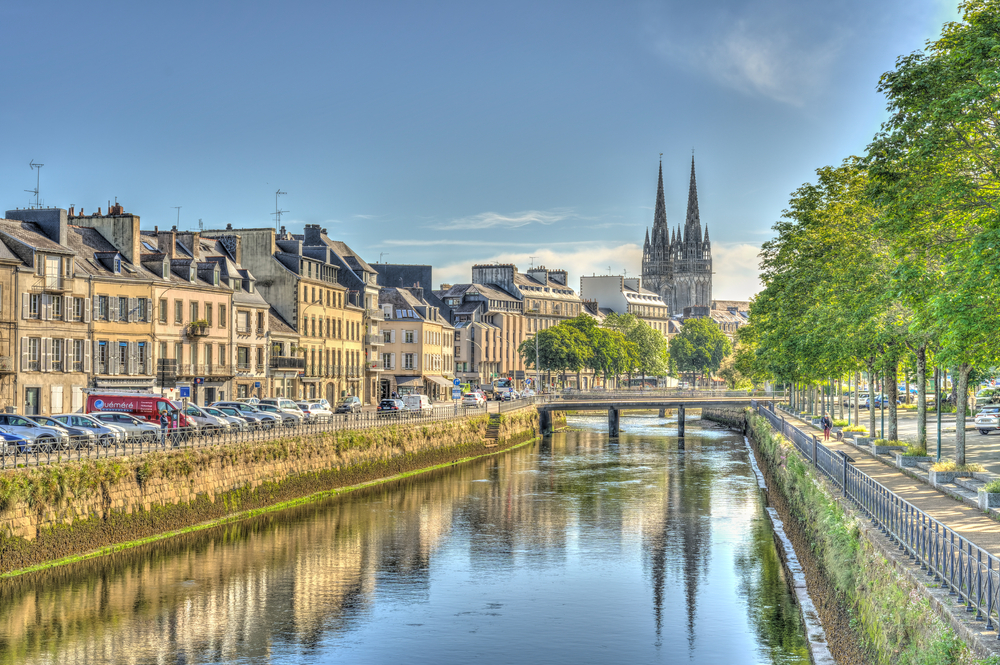
Finistère, Brittany’s most emblematic department, is the perfect embodiment of the expression “end of the world”, with its spectacular coastal landscapes, picturesque villages and exceptional cultural heritage. Between the Atlantic Ocean and the English Channel, this land of legends offers a diversity of remarkable sites that make every visit a true Breton adventure. Discover the 20 must-sees in Finistère that will reveal all the soul of this authentic region, from historic towns to grandiose natural sites, mysterious islands and ancestral traditions.

1. Quimper, the capital of Cornouaille
Quimper, the prefecture of Finistère, is an architectural gem where Breton history comes to life around every corner. This town of art and history has a wealth of half-timbered houses, a majestic Saint-Corentin cathedral with Gothic spires and cobbled streets winding along the Odet.
The historic centre is home to treasures such as the Place au Beurre, the scene of Breton flavours, and the Locmaria district, the birthplace of Quimper’s famous earthenware. A visit to Quimper will allow you to discover the authentic soul of Brittany.
Download the audio tour to discover Quimper on foot and on your own
Explore the capital of Cornwall with our interactive itinerary that guides you through 24 emblematic places of interest. From half-timbered houses to secret gardens, discover the thousand-year-old history of this Breton city on a 2 hour 20 minute walk through its traditions. Let our audio tour of Quimper be your guide for a complete and rewarding exploration.
Also in the Quimper guide :
- Top 10 culinary specialities in Quimper
- Top 6 things to do in Quimper
- What are the best hotels in Quimper?
2. Brest, the capital of the oceans
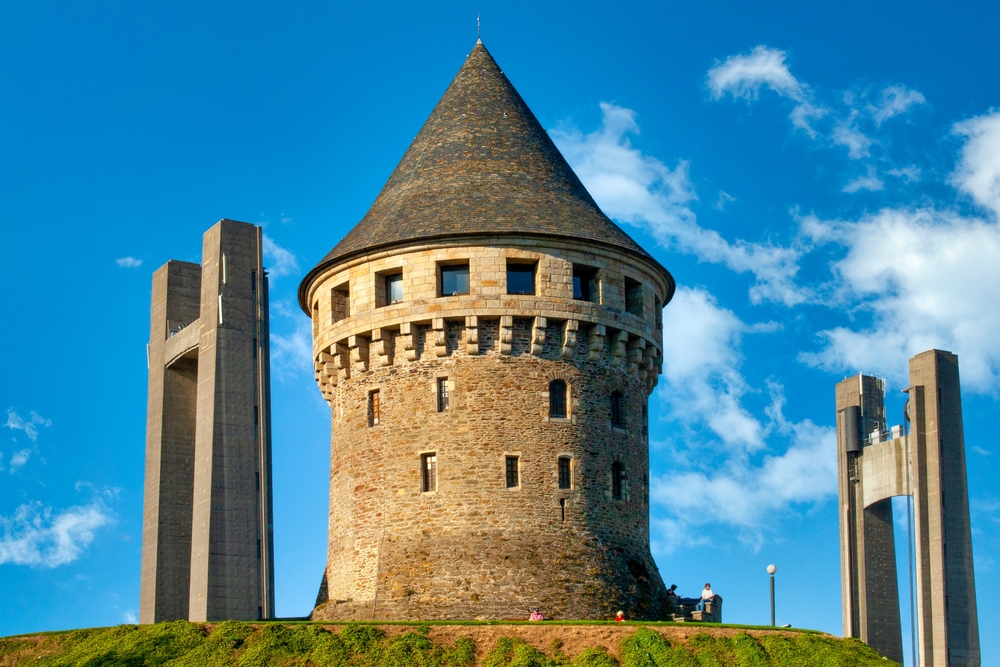
Brest fascinates with its maritime identity, deeply rooted in its DNA. With one of the most beautiful harbours in the world, this Ponant city combines modern architecture with an exceptional naval heritage. The Château de Brest, a thousand-year-old fortress, has proudly guarded the entrance to the harbour for centuries.
Océanopolis, one of Europe’s largest aquariums, reveals the mysteries of the world’s oceans. The commercial port and naval base bear witness to Brest ‘s strategic importance in French maritime history.
Download the audio tour to discover Brest on foot and on your own
Immerse yourself in the maritime world of the capital of the oceans with our 8.2km route, which reveals 27 emblematic sites. From the medieval castle to the Ateliers des Capucins, explore 3? hours of Breton naval history and modernity. Our Navaway itinerary guides you through the secrets of this unique city.
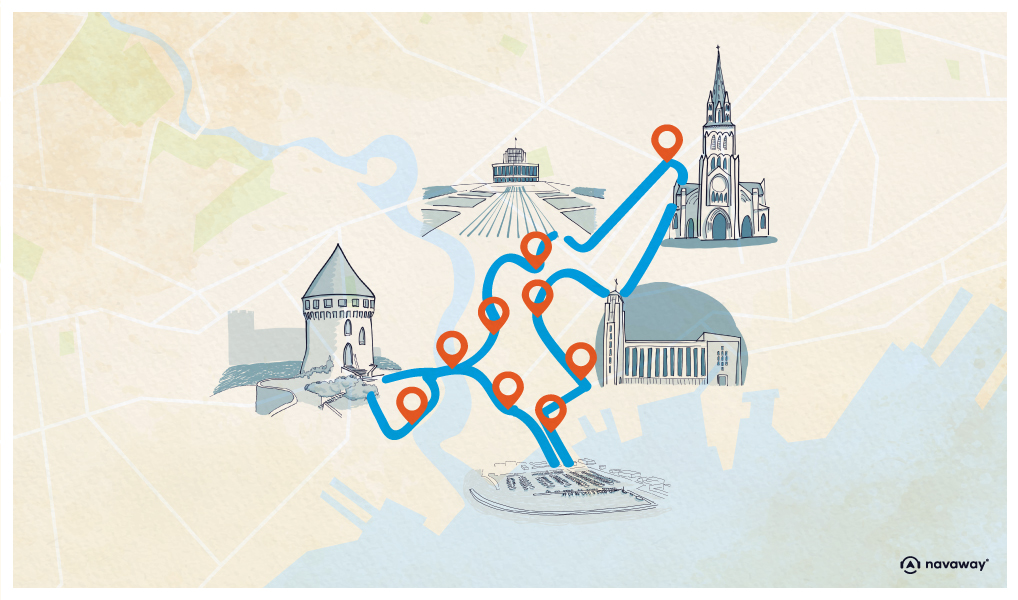
3. Pointe du Raz, an exceptional natural site
Listed as a Grand Site de France, the Pointe du Raz embodies the raw power of the Atlantic Ocean. Its vertiginous 70-metre cliffs dominate an often tumultuous sea, offering a breathtaking natural spectacle. Facing the island of Sein, this rocky promontory reveals all the wild beauty of Finistère.
The GR 34 coastal path is a safe way to discover this geological wonder. The Maison de la Pointe du Raz offers an interactive discovery of this exceptional site and its fragile ecosystem.
4. Concarneau and its walled town
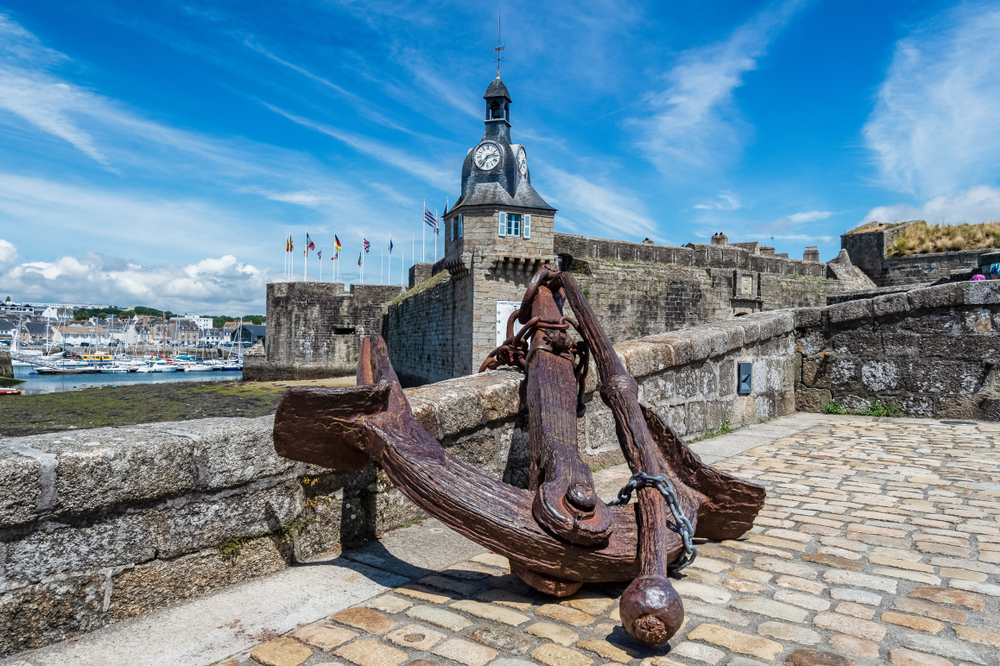
Concarneau’s charm lies in its fortified walled town, an architectural gem set on a rocky islet in the heart of the harbour. Surrounded by 15th-century ramparts, this medieval town boasts cobbled streets, granite houses and craft shops in a timeless atmosphere.
The fishing port, France’s third-largest, continues its maritime traditions, while the beaches of Les Sables blancs invite you to relax and enjoy the sea (29900 Concarneau, rated 4.3/5 on Google out of 2,757 reviews).
5. Locronan, most beautiful village in France
Locronan, the only commune in Finistère to be classified as a Most Beautiful Village in France, is enchanting with its perfectly preserved Renaissance architecture. Its granite houses with slate roofs, arranged around a harmonious central square, bear witness to the past prosperity of the sailcloth trade.
The church of Saint-Ronan and the chapel of Pénity reveal a rich religious heritage, while craft workshops perpetuate Breton traditions (29180 Locronan, rated 4.5/5 on Google out of 3,421 reviews).
6. The Crozon peninsula, a natural gem
The Crozon peninsula unfurls its rocky points in the Iroise Sea, creating an imposing natural amphitheatre. The pointe de Pen-Hir and its famous Tas de Pois offer exceptional panoramic views over the ocean and the Ponant islands.
Morgat is a family-friendly seaside resort with colourful sea caves accessible by kayak. The peninsula is also home to some remarkable historic sites, including Landévennec Abbey and numerous relics of the Second World War.
7. Roscoff, the corsair town of North Finistère
Roscoff has an exceptional architectural heritage, a legacy of its past as a prosperous privateer port. The shipowners’ houses with their sculpted facades bear witness to the golden age of maritime trade, while the church of Notre-Dame de Croaz-Batz impresses with its Renaissance bell tower.
Roscoff’s exotic garden boasts amazing subtropical vegetation, benefiting from the oceanic microclimate. The port remains active with its links to Ireland and England (29680 Roscoff, rated 4.4/5 on Google for 1,892 reviews).
8. Ushant Island, at the edge of the world
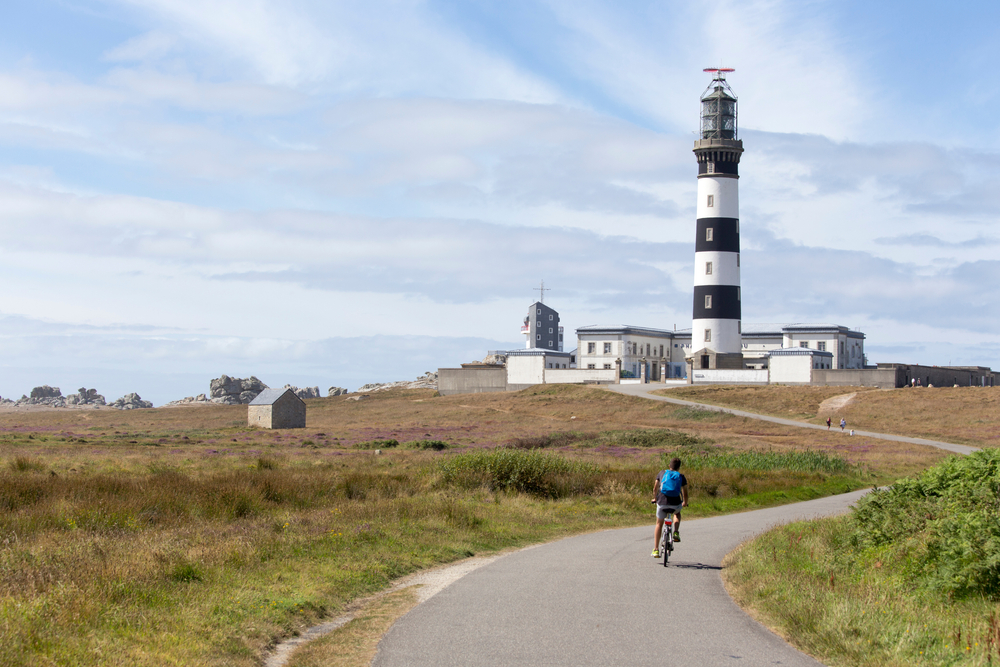
Ushant, the island at the end of the world, fascinates visitors with its wild landscapes and legendary lighthouses. The Créac’h lighthouse, one of the most powerful in Europe, guides ships through this formidable maritime crossroads. The windswept moors are home to a rare flora and emblematic black sheep.
The Lighthouses and Beacons Museum traces the history of maritime signalling, while the coastal paths reveal spectacular cliffs and secret coves. The Niou Huella eco-museum perpetuates the traditions of Ushant.
9. Douarnenez and its legendary bay
Douarnenez, once France’s leading sardine port, is cultivating its authentic maritime soul. The Port-Musée, the only one of its kind in Europe, brings together a flotilla of traditional boats in a lively harbour setting. The bay of Douarnenez, one of the most beautiful in Brittany, is enchanting with its turquoise waters and fine sandy beaches.
Ile Tristan, accessible on foot at low tide, reveals remarkable archaeological and botanical remains. The beach at Le Ris is ideal for water sports and relaxing at the seaside.
10. The mountains of Arrée and their mystical atmosphere
The Monts d’Arrée, the “roof of Brittany”, rise to 385 metres at Roc’h Ruz in a desolate and mysterious moorland setting. This ancient massif features landscapes of peat bogs, rocky chaos and steep-sided valleys, the stuff of Celtic legends.
Lake Saint-Michel and the Huelgoat gorges reveal a remarkable unspoilt natural environment. The parish enclosures of Saint-Thégonnec and Guimiliau bear witness to the artistic wealth of this region steeped in history.
11. Pont-Aven, city of painters
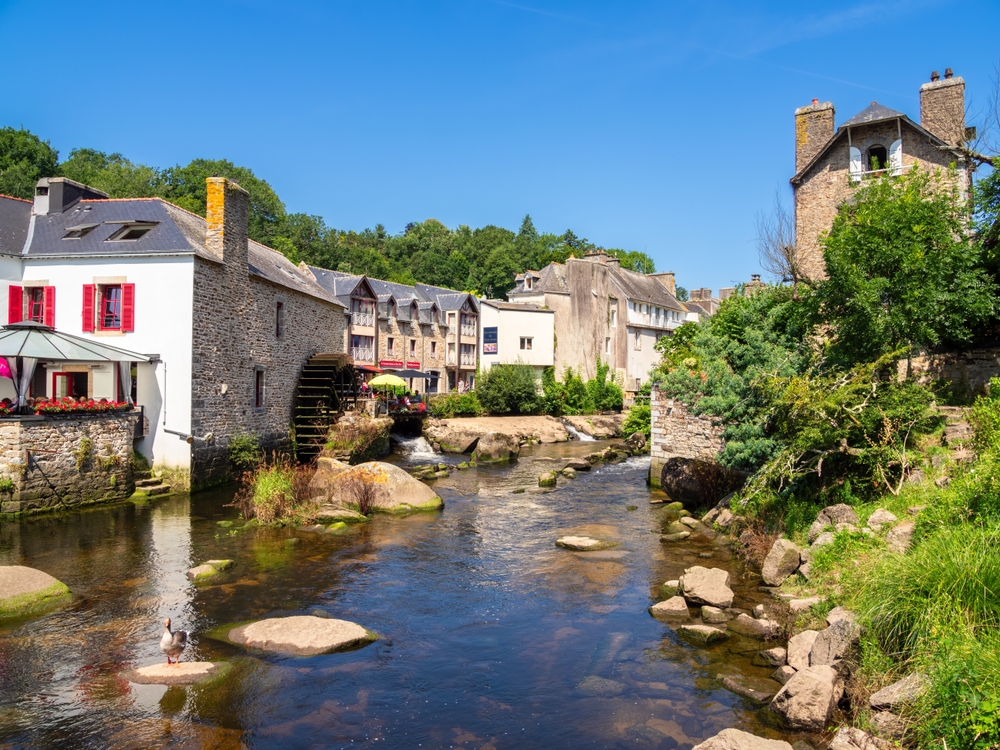
Pont-Aven, made famous by Paul Gauguin and the Pont-Aven School, cultivates its exceptional artistic heritage. The water mills that line the Aven create a bucolic setting that has inspired generations of artists in search of the Breton light.
The Pont-Aven museum retraces this major artistic epic of the late 19th century. Contemporary art galleries perpetuate this creative tradition, while the famous galettes de Pont-Aven have been delighting gourmets since 1890 (29930 Pont-Aven, rated 4.2/5 on Google out of 1,547 reviews).
12. The Glénan archipelago, the Breton Caribbean
The Glénan archipelago’s crystal-clear turquoise waters rival those of the most beautiful tropical destinations. These nine coral islets are home to immaculate white sandy beaches and exceptional marine biodiversity.
The famous Glénans sailing school perpetuates nautical traditions, while the Glénan narcissus, an endemic flower unique in the world, blooms in spring in this unspoilt natural paradise.
13. Le Guilvinec, the leading small-scale fishing port
Le Guilvinec drives the maritime economy of South Finistère as France’s leading small-scale fishing port. The bustle of the morning fish auction reveals the authenticity of this traditional activity, while the Haliotika museum reveals the secrets of modern fishing.
The colourful trawlers create a lively spectacle in this harbour of character, where the ancestral skills of the fishermen live on. The surrounding Bigouden coast reveals authentic maritime landscapes (29730 Le Guilvinec, rated 4.1/5 on Google out of 987 reviews).
14. The legendary rocky chaos of the Huelgoat forest
The Huelgoat forest is enchanting with its granite chaos and fantastic shapes sculpted by millennia of erosion. The Grotte du Diable (Devil’s Cave), the Roche tremblante (Trembling Rock) and the Ménage de la Vierge (Virgin’s Household) feed the Celtic imagination in this mysterious cathedral of vegetation.
The signposted paths wind between mossy boulders and crystal-clear rivers, creating a fairytale atmosphere that is unique in Brittany. Lac de Huelgoat adds an aquatic dimension to this remarkable natural site (29690 Huelgoat, rated 4.6/5 on Google out of 682 reviews).
15. Les Abers, coast of legends
The Abers in North Finistère are wild estuaries where rivers and ocean mingle in unique amphibious landscapes. The Aber-Wrac’h, Aber-Benoît and Aber-Ildut create havens of peace ideal for pleasure boating and observing marine wildlife.
The Île Vierge lighthouse, Europe’s tallest stone lighthouse, keeps watch over this legendary coastline. Fishing villages such as Porsall have preserved their maritime authenticity in this unspoilt natural setting.
16. Penmarc’h and its iconic lighthouses
Penmarc’h, in the heart of the Bigoudin region, stands with its iconic lighthouses against the fury of the ocean. The Eckmühl lighthouse, a 65-metre granite giant, has been guiding ships through these fearsome waters, renowned for their shipwrecks, since 1897.
The Notre-Dame-de-la-Joie chapel and the Prehistory Museum reveal the rich heritage of this land of sailors. Bigouden traditions, symbolised by the famous headdresses, perpetuate the area’s strong cultural identity (29760 Penmarch, rated 4.0/5 on Google out of 1,543 reviews).
17. The island of Sein, land of the Senans
The island of Sein, a rocky confetti of 58 hectares, fascinates by its resistance to the onslaught of the ocean. This flat land, no more than 2 metres above sea level, is home to a courageous island community perpetuating ancestral maritime traditions.
The Sein lighthouse guides ships through the raz de Sein, a formidable maritime passage. This heroic island, symbol of the Breton Resistance, retains its authenticity in a geographical isolation that forges the exceptional character of its inhabitants.
18. La Torche beach, surfing mecca
La Torche beach attracts surfers from all over the world with its powerful, regular waves, created by the exceptional configuration of Audierne Bay. This internationally renowned spot hosts top-level surfing championships in a magnificent natural setting.
Dune de la Torche, a protected natural site, boasts remarkable dune flora. Surfing activities (kitesurfing, windsurfing, sand yachting) find ideal conditions here in this sporty, relaxed atmosphere (29120 Plomeur).
19. Bénodet, the Breton Riviera
Bénodet cultivates its image as a Breton riviera, with its Belle Époque villas, fine sandy beaches and elegant marina. This refined seaside resort will win you over with its French art of living in an exceptional maritime setting.
The Odet estuary reveals bucolic landscapes on river cruises to Quimper. The casino, golf courses and thalassotherapy centres complete the top-of-the-range tourist offer of this privileged destination (29950 Bénodet, rated 4.2/5 on Google for 2,187 reviews).
20. Le Conquet, gateway to Iroise
Le Conquet, a port of character with granite houses clinging to the cliffs, is the gateway to the Iroise Sea and its mysterious islands. This authentic end of the world has preserved its soul as a traditional fishing port in an unspoilt natural setting.
The Bertheaume fort, linked to the coast by a vertiginous footbridge, bears witness to the strategic importance of this maritime position. The coastal paths offer exceptional views of the Molène archipelago and the island of Ouessant (29217 Le Conquet, rated 4.3/5 on Google out of 1,892 reviews).
In conclusion, Finistère reveals all its treasures through these 20 must-see sites that combine an exceptional natural heritage, a wealth of Breton culture and living maritime traditions. From Quimper to Ushant, via the Pointe du Raz and the villages of character, each discovery enriches your knowledge of this authentic and wild Brittany. To take your exploration even further, don’t hesitate to use the Navaway audio tours, which reveal all the secrets of these emblematic destinations at the tip of France.
Frequently asked questions
When is the best time to visit Finistère?
Finistère is best visited between May and September, when temperatures are mild and the weather stable. Summer offers the advantage of long days and warm weather for seaside activities, while spring and autumn reveal colourful landscapes with fewer tourists.
Getting around Finistère
The car is still the most practical way of exploring Finistère’s must-sees and accessing isolated natural sites. The BreizhGo public transport network serves the main towns, while regular sea links connect the mainland with the Ponant islands.
How long does it take to visit Finistère?
One week allows you to discover the major sites of Finistère, while two weeks gives you time to explore the islands and enjoy water sports. A weekend is enough to visit Quimper and its immediate surroundings, but only gives you a glimpse of the wealth of the department.
What culinary specialities can you try in Finistère?
Finistère delights with its seafood (Belon oysters, scallops), buckwheat pancakes and galettes, kouign-amann from Douarnenez, far breton and farmhouse ciders. The restaurants of Quimper and the fishing ports perpetuate these Breton gastronomic traditions.
200 audioguided tours for cities all around the world
Download